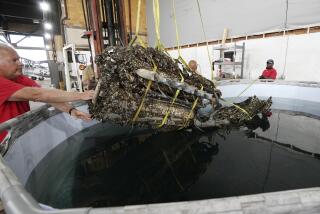From that grim crucible of World War...
From that grim crucible of World War I came new and elementary ways of killing men in all their combat elements. By armored parallelograms called tanks, by the first whiff of mustard gas and chemical warfare, by underwater shells fired from underwater boats . . . and by bombs and bullets from airplanes. In Rise of the Fighter Aircraft: 1914-1918 (Nautical & Aviation Publishing: $18.95), eight-volume aerospace author Richard P. Hallion (historian of the Air Force Flight Test Center at Edwards AFB) destroys the standard belief that the war in the skies above Belgium and France was an impotent sideshow. Rather, he states, missions by the Spads, Fokkers, Sopwiths and Nieuports of both sides were quite effectual with considerable impact on the operations, plans and course of the Great War . . . while setting combat maneuvers and military doctrines that survive as considerations of today’s supersonic jet warfare.


